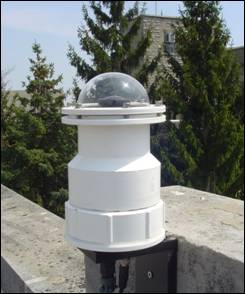ASGARD All-Sky Camera Network
Software and Hardware
ASGARD Detection Software
To record fireballs with these video systems, the All Sky and Guided Automatic Real-time Detection (ASGARD) software was developed by one of us (R. Weryk). An early version of the detection software and our reduction procedures was first described by Weryk et al. (2008). The software detects meteors in real-time, and can acquire video data from a range of video sources, including analog video camera interfaces, pre-recorded video, and digital camera interfaces using the high-speed CameraLink interface. The software is run under the Debian GNU/Linux operating system, and ideally requires at least a 1 GHz processor, 256 MB of memory, and a 40 GB hard drive. However, a modern 3 GHz processor could run 8+ cameras simultaneously. This would be beneficial if each camera had a longer focal length lens, which would give effective all-sky coverage while at the same time being sensitive to fainter meteors.
Hardware
The cameras used for each station are HiCam HB-710E SONY Ex-view HAD (1/2" size) CCD cameras equipped with a Rainbow L163VDC4 1.6-3.4 mm f/1.4 lens . The cameras are housed inside a simple enclosure with a clear acrylic dome (see picture below). The enclosure has a thermostat for heating during winter and a fan system to circulate air and prevent dewing of lenses or the dome. A photosensor attached to each camera which shuts off the unit during the day. The acrylic domes have a useful lifetime of only ~6 months and are entirely replaced on a regular basis. The video signal from the camera (NTSC, 29.97 frames per second) in a 640x480 format is captured by a Brooktree 878A frame-grabber card in a PC, processed, and then streamed to disk. Timing information (based on the system time when a hardware interrupt from the capture card occurs) is calibrated against a US GlobalSat BU-353 USB GPS receiver using the Network Time Protocol (NTP) software. Instead of simply correcting the system clock periodically (which allows it to drift between updates), NTP will adjust the clock rate to ensure the clock is always accurate to better than one frame time. When extreme accuracy is desired, NTP can use a pulse per second (PPS) signal to obtain times accurate to ~10 microseconds.

A schematic of the multi-camera detection and processing flow is show below



